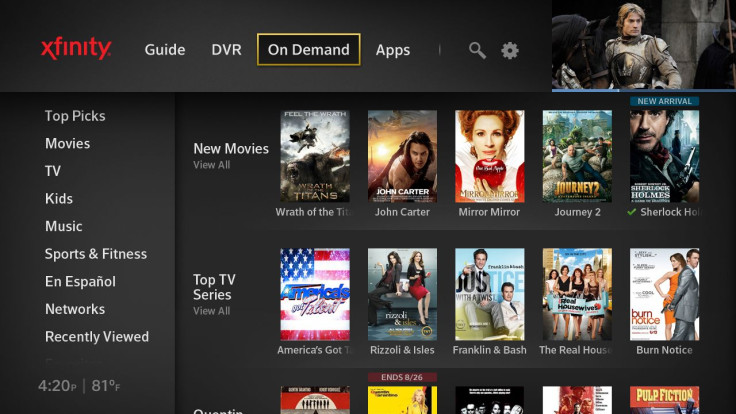What Time Warner Cable Customers Can Expect From Comcast: The Xfinity X1 Platform

Comcast (NASDAQ:CMCSA) has announced it will purchase Time Warner Cable (NYSE:TWC) for $45.2 billion. Currently, the two companies currently serve 33 million subscribers, of which Comcast says it will get rid of 3 million cable subscribers to allay antitrust fears.
A proposed 2011 merger between AT&T and T-Mobile was blocked by the FCC, and the Comcast purchase of Time Warner will likely face similar federal scrutiny. If the Obama administration allows the deal to go through, Comcast would then serve slightly less than 30 percent of the U.S. pay television market.
Time Warner Cable has been losing customers in the past few quarters, which some blame on its lack of investment in hardware. Comcast, on the other hand, has introduced new set-top boxes and the X1 platform, which it credits in part for retaining more video subscribers than the rest of the industry.
Comcast will acquire Time Warner Cable customers from Los Angeles to New York City, although the two providers do not directly compete in any one area. Time Warner Cable currently offers a "triple play" package of phone, cable and Internet service for $45 for the first 12 months, after which regular rates apply. Comcast's triple play deal starts at $80 a month for the first 12 months and goes up to $155 a month afterward.
So what can Time Warner Cable’s 11.4 million customers expect from Comcast other than potentially higher prices? Most likely, an eventual upgrade to the Xfinity X1 platform.
The X1 is Comcast’s answer to cord-cutting solutions. With hardware like the Roku and Chromecast, and services like Netflix becoming increasingly more prevalent, the provider is attempting to offer a more up-to-date cable service. Comcast’s X1 platform promises all-digital upgrades, faster broadband, more public Wi-Fi access and, importantly, better access to a growing video-on-demand library.
The X1 platform offers an AnyRoom DVR that allows non-DVR set-top boxes to schedule and watch recordings, but not pause or rewind live television. The system allows customers to play back up to four programs simultaneously.
The Xfinity X1 system includes apps that enable in-home streaming of the company’s full TV lineup on up to five PCs, tablets and smartphones, as well as the ability to give voice commands to record a show or change the channel. Comcast is also working toward a cloud DVR component for the X1, which began rolling out in Boston earlier this month.
Comcast’s cloud DVR offers 500 gigabytes of video storage, and allows customers to record up to four shows at once, while watching a fifth. Comcast says it will expand this to six simultaneous recordings with a seventh available.

The guide on Xfinity X1 is based on HTML5, and has several hardware components for customers. X1 Cable boxes are nearly identical, and come from ARRIS-Motorola and Pace. Comcast has included RF communication on remotes for the X1, which allows them to communicate with set-tops even if they are not in the user’s line of sight. The company offers an upgraded model with a three-second backlight that costs subscribers an extra $19.99, and will eventually roll out a new remote model for the X1 platform called the XR11 that includes a microphone for voice gestures.
Reviewers have said that the X1 is a much better system than older units, but sometimes has errors where the DVR skips a recording.
How do you feel about the proposed merger? Are you a Time Warner Cable customer concerned about higher prices, or perhaps looking forward to Xfinity X1? Let us know in the comments below.
Follow me on Twitter @tommylikey
© Copyright IBTimes 2024. All rights reserved.





















